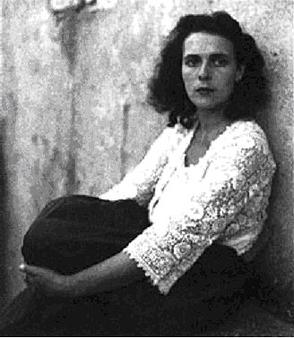
“15 Women Artists Awarded $50,000 Unrestricted Grants”

### Supporting Women Artists: A Spotlight on the Anonymous Was A Woman Grant
In a world where gender inequity persists across creative fields, a grant program like **Anonymous Was A Woman** (AWAW) helps elevate the voices of underrepresented women artists. Recently, this esteemed initiative announced its 2024 cohort, awarding fifteen women-identifying artists, aged between 42 and 89, with significant no-strings-attached grants of $50,000 each. The total awards for this year amount to a remarkable $750,000 to help these artists boldly continue their creative journeys.
This funding represents something far more substantial than monetary support—it reflects a sincere acknowledgment and celebration of the immense contributions women artists have made and continue to make to global cultural landscapes.
—
### A Program Rooted in Art and Advocacy
The name “Anonymous Was A Woman” is inspired by Virginia Woolf’s iconic essay, *A Room of One’s Own* (1929), where Woolf underscores the anonymity forced upon women throughout history in creative and scholarly disciplines. AWAW was founded in 1996 by contemporary photographer **Susan Unterberg**. Its creation was a direct response to the unfortunate decision by the National Endowment for the Arts to discontinue support for individual artists. For two decades, Unterberg kept her identity as the grant’s founder hidden—a choice mirroring the spirit of its name. She revealed her involvement only in 2018 to serve as a more vocal advocate for women artists.
Since its inception, the program has provided over $7 million in grants. These unrestricted funds help artists navigate what AWAW calls “critical junctions” in their careers—times when additional funding can foster innovation, growth, and sustainability in their practices. For women in their 40s and beyond, such opportunities are transformative, especially in a landscape rife with systemic barriers.
—
### Breaking New Ground: The 2024 Cohort
The 2024 winners work across disciplines as varied as painting, multimedia, photography, choreography, fiber art, arts activism, and pedagogy. To recognize their extraordinary contributions, the AWAW prize is now double its previous award of $25,000—a continuation of the program’s expansion in recent years.
This year’s cohort includes artists who continue to push artistic and cultural boundaries:
– **Erica Baum**, a New York-based photographer whose works juxtapose text and image to explore the poetry of language in everyday contexts.
– **Mary Enoch Elizabeth Baxter**, a multidisciplinary artist and activist whose critically acclaimed work tackles topics of systemic injustices, including mass incarceration.
– **Takako Yamaguchi**, an abstract painter exploring bold artistic forms and Japanese-inspired aesthetics.
– **Rashida Bumbray**, a choreographer and curator weaving narratives on Black women’s traditions in dance.
– **Liliana Porter**, an Argentinian-born multimedia artist known for her thought-provoking, surrealistic works that interrogate time and memory.
Ranging in age from 42 to 89, the grantees represent a spectrum of experience and expertise. The oldest recipient, **Mary Lee Bendolph**, is part of the celebrated Gee’s Bend quiltmakers, whose patchwork quilts embody a powerful legacy of African American artistic tradition. Notably, familiar names like multimedia pioneer **Liz Phillips** and abstract painter **Gladys Nilsson**—an original member of the Chicago Imagists—are also being honored.
—
### Unrestricted Creativity at a Crucial Moment
Unlike many fellowships and funds, the AWAW grants come without stipulations on spending. Artists have complete freedom of choice in how they apply the funds, whether for supplies, studio spaces, exhibitions, research, or personal needs. This unrestricted nature allows recipients to channel the funds into areas that best support both their creative and personal lives—a critical factor considering that the art world often overlooks the challenges faced by women artists juggling caregiving responsibilities or systemic stresses like inadequate representation in galleries and museums.
Unterberg emphasized in her 2018 public statement that AWAW was not just an act of philanthropy but also a call to action: “I had remained anonymous as an artist-run program because I wanted it to be about the artists we’ve supported. But to be a better advocate for women artists, I felt I needed to come out.”
—
### Intersectionality in Art: Extending the Conversation
AWAW extends its role as an advocate by working with arts professionals to identify issues impacting women artists across diverse intersections—namely age, race, geography, and artistic discipline. Alongside its grants, AWAW is conducting a **survey of women visual artists** to investigate the challenges they face. The data, once published, will aim to empower artists and inform their activism while promoting improved relationships between creators and art institutions. It’s an effort to establish a framework for inclusivity, equity, and justice in artistic spaces.
—
### A Tradition of Elevating Women’s Voices
The grant is part of a long-overdue reckoning within a notoriously